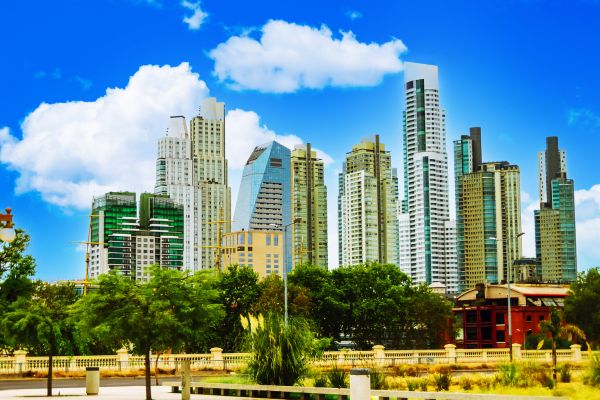Parque Micaela Bastidas

About
Parque Micaela Bastidas is a contemporary urban park located in the heart of Puerto Madero, Buenos Aires' most modern and upscale neighborhood. Named after Micaela Bastidas, a prominent figure in the fight for Peruvian independence, the park honors her legacy while providing a tranquil escape from the bustling city life.
Designed by renowned Argentine architect and landscape designer, Diana Balmori, Parque Micaela Bastidas covers an expansive 5.5 hectares. The park is a masterpiece of modern landscape architecture, blending natural elements with innovative design to create a space that is both functional and aesthetically pleasing.
Features and Attractions
- Innovative Design: The park’s design is characterized by its clean lines, open spaces, and integration with the surrounding urban environment. The layout encourages exploration and relaxation, with wide pathways, gently sloping lawns, and shaded areas.
- Natural Beauty: Parque Micaela Bastidas is home to a diverse array of trees, plants, and flowers, creating a lush and vibrant environment. The carefully curated greenery provides a peaceful setting for visitors to enjoy nature in the midst of the city.
- Water Features: A central water feature adds to the park's serene atmosphere, with fountains and reflective pools that enhance the sense of tranquility.
- Recreational Areas: The park offers plenty of space for recreational activities. There are dedicated areas for picnicking, children’s playgrounds, and open fields where visitors can enjoy sports or simply relax.
- Public Art: Throughout the park, you’ll find sculptures and art installations that add a cultural dimension to the experience. These works of art pay tribute to Micaela Bastidas and other historical figures, as well as celebrate contemporary Argentine artists.
- Sustainable Design: Parque Micaela Bastidas is also notable for its commitment to sustainability. The park incorporates eco-friendly features, including energy-efficient lighting and an irrigation system that conserves water.
Why Visit Parque Micaela Bastidas?
Visiting Parque Micaela Bastidas offers a unique opportunity to experience a modern green space that reflects the innovative spirit of Puerto Madero. It’s an ideal spot for a leisurely stroll, a family outing, or simply to enjoy a moment of peace in a beautifully designed environment.
The park’s proximity to other attractions in Puerto Madero, such as the Reserva Ecológica Costanera Sur and the historic Puente de la Mujer, makes it a convenient and worthwhile stop on any itinerary.
Did You Know?
- Historical Significance: Micaela Bastidas, after whom the park is named, was a key figure in the struggle for Peruvian independence alongside her husband, Túpac Amaru II. She is remembered as a symbol of courage and sacrifice in the fight against colonial rule.
- Award-Winning Design: The park's innovative design has been recognized internationally, with several awards for its architecture and landscaping.
Nearby Attractions
- Reserva Ecológica Costanera Sur: Just a short walk from the park, this large ecological reserve offers a natural escape with trails, wildlife, and scenic views of the Río de la Plata.
- Puente de la Mujer: A striking pedestrian bridge designed by Santiago Calatrava, it’s an iconic landmark of Puerto Madero and a must-see for visitors.
- Museo Fragata Sarmiento: A museum ship anchored in Puerto Madero, offering insight into Argentina's naval history.

How to get to Puente de la Mujer:
Subway:
Linea B: Get off at L.N. Alem Station.
Linea A: Get off at Plaza de Mayo Station.
Both stations are within a 5-10 minute walk from Puerto Madero.
Bus:
Routes 2, 4, 6, 20, 22, 26, 33, 54, 56, 61, 62, 64, 74, 93, 99, 105, 109, 111, 126, 129, 130, 140, 143, 146, 152, and 159 pass close by.
To find out more about using public transport in Buenos Aires, including details on buses, subways, trains, taxis, ride-sharing services, and how to obtain and use the SUBE card, visit the Best Way to Get Around Buenos Aires section.
Address:
Parque Micaela Bastidas, Julieta Lanteri 1900, Puerto Madero, Buenos Aires.
